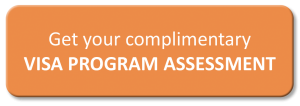The Healthcare Industry has been growing at an increasing pace over the past several years. Factors such as the implementation of the Affordable Care Act, an aging population, and technological advances all contribute to the ever-expanding demand for qualified healthcare employees. The US Bureau of Labor Statistics predicts that Healthcare will be the largest employment sector in the US economy by 2024.
Growth in the healthcare industry presents a number of difficulties for HR professionals. Filling positions quickly and effectively, creating a workplace that encourages employee engagement, ensuring smooth succession processes, and reducing employee turnover are some of these seemingly insurmountable challenges.
Increasing Retirement Rates
In addition to greater demand for services, the industry is facing rapidly increasing retirement rates for experienced employees. Especially in the nursing field, the impact of retirement will have a large impact on staffing levels. At least 55% of the RN workforce is over the age of 50 and quickly approaching retirement age. According to an American Association of the Colleges of Nursing (AACN) summary of reports, there will be a growing shortage of registered nurses across the country between 2009 and 2030. By 2025 the US is expected to experience a nursing shortage “twice as large as any nursing shortage experienced in this country since the mid-1960s” with the rapidly aging nursing workforce as the primary contributor.
The combination of increasing demand for employees and increasing rates of retirement creates an ever-widening talent gap in the healthcare industry. There are not enough employees to occupy new positions, nor are there enough employees to backfill positions that open due to retirement. As a result, at least 33% of hospitals have job vacancy rates greater than 10%. Clearly, traditional healthcare recruiting strategies are not able to fill positions at a fast enough pace to keep up with demand.
As a result of these changes, the following five trends in healthcare industry recruiting and relocation are emerging:
Top 5 Healthcare Industry Recruiting and Relocation Trends
1. Provide Exceptional Candidate Experiences
Healthcare industry recruiters must focus on keeping candidates happy and engaged in the recruitment process. Providing each candidate an exceptional experience is necessary to keep your organization as the candidate’s first choice in their employment search. The organization should conduct a review of the entire candidate experience, including the application process, interviews, job offers, relocation benefits, and onboarding procedures.
HR professionals should put themselves through each of these processes to see how their organization treats and responds to candidates. Successful recruiting programs treat candidates respectfully and make them feel highly valued. Candidates are more likely to choose to work for an employer that treats them well.
2. Use Data to Enhance Healthcare Industry Recruiting
Healthcare organizations must analyze the effectiveness of their recruiting activities. Knowing which efforts are working well, and which efforts are not, will help the organization identify what it needs to improve. For example, an organization may have a job advertising program in place within a journal or news network. If these programs are not providing qualified candidates that proceed to job offers and acceptances, the organization should consider redirecting those resources.
Conversely, if a partnership with a local university proves to be a good source of qualified candidates that proceed to employment, consider enhancing the program or creating additional partnerships. Think beyond current geographical boundaries; partnerships can easily generate candidate interest within international locales. Relocation Management Companies (RMCs) are ideal sources for information on global candidate recruitment and relocation.
3. Recruit for Cultural Fit
Healthcare organizations searching for qualified employees may be able to easily identify those with the requisite skills, education, and experience. However, healthcare is a unique industry in that it is so highly focused on personal interactions. Healthcare organizations looking to fill job vacancies at a pediatric practice would want candidates who enjoy working with children.
Pre-Decision Services are critical for healthcare organizations as they provide valuable information about a candidate’s ability to accept a position and be successful. Behavioral assessments can be a strong predictor for cultural fit. Healthcare organizations can easily identify candidates with the qualities that match their organizational culture. Assessment data can be paired with structured interview questions to better understand the candidate’s interests, goals, and motivations.
4. Create a Superior Healthcare Industry Employer Brand
Highly-skilled healthcare workers are in great demand. As a result, these workers can easily choose where they want to work and for which organization they prefer. Seventy-five percent of employees seeking new jobs consider an employer’s brand before applying for open positions. Consider how your healthcare organization’s brand appears to job seekers. Does it generate positive industry news? Are online reviews favorable from current employees as well as current customers? If the employer brand you find does not fill you with positive feelings, then you can be sure candidates are also experiencing this same feeling.
To create a successful employer brand and generate positive feeling among job seekers, healthcare organizations should find out from current employees whether the organization is one where people want to work. Also, research comments from employees and candidates on review websites and social media. Determine which issues are of concern and address them. This will help you ensure employees will perceive your organization as the brand you prefer it to be. Follow through by updating recruiting materials, websites, social media, job postings, emails, and other venues to be sure you amplify the correct employer brand and messages. Consider creating a branded career website with enhanced relocation program messages to welcome candidates to your organization.
5. Speed the Process to Keep Candidates Engaged
Qualified candidates are always seeking new opportunities, and your organization is always looking to hire. The quicker you help candidates move through the process, the more they will remain engaged and likely to consider your organization for employment.
According to the 2018 Recruiting Benchmark Report from Jobvite, the time to fill job vacancies in the healthcare industry is 38 days. At the same time, the industry has 21 applications per job, which is one of the lowest among industries. If several days or even weeks can be taken out of the process, the organization will benefit tremendously and experience lower job vacancy rates.
Conclusion
GMS’ team of corporate relocation experts have helped thousands of our clients develop relocation programs that attract and retain qualified employees. Our team can help your healthcare company by designing a relocation program that represents industry best practices. This will increase your company’s ability to attract and retain new employees.
GMS was the first relocation company to register as a “.com.” The company also created the first online interactive tools and calculators, and revolutionized the entire relocation industry. GMS continues to set the industry pace as the pioneer in innovation and technology solutions with its proprietary MyRelocation® technology platform.
Global Mobility Solutions is proud to be named and ranked #1 Overall, and #1 in Quality of Service by HRO Today’s 2019 Baker’s Dozen Customer Satisfaction Survey.
Contact our experts online to discuss your healthcare company’s relocation program needs, or give us a call at 800.617.1904 or 480.922.0700 today.










